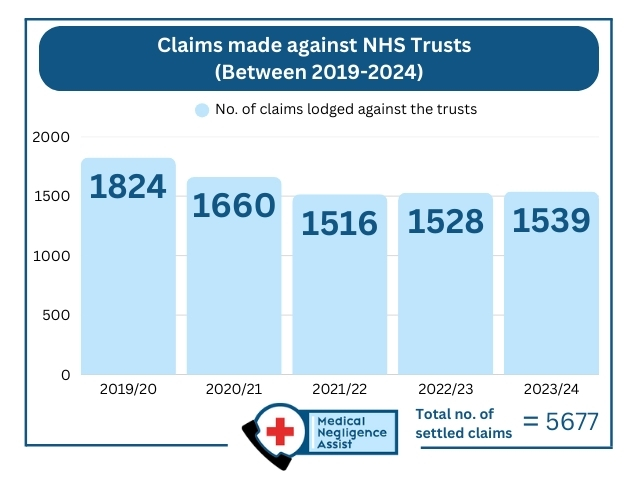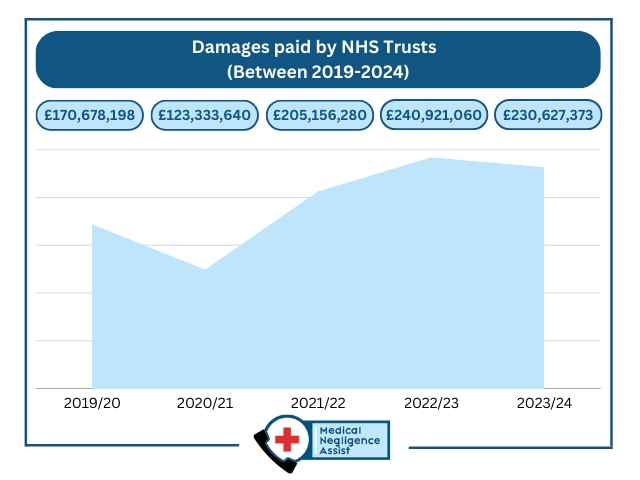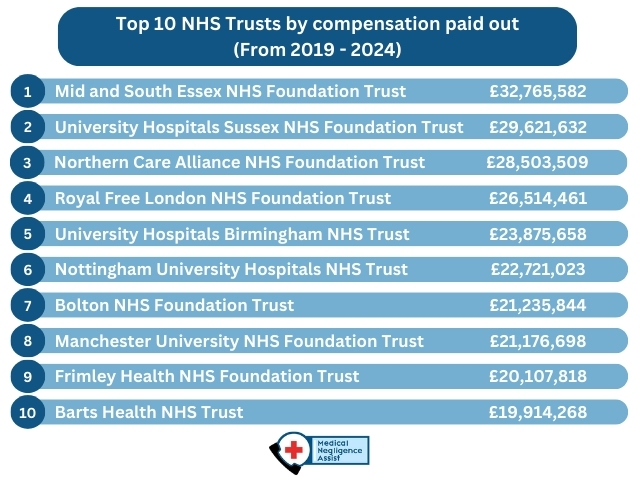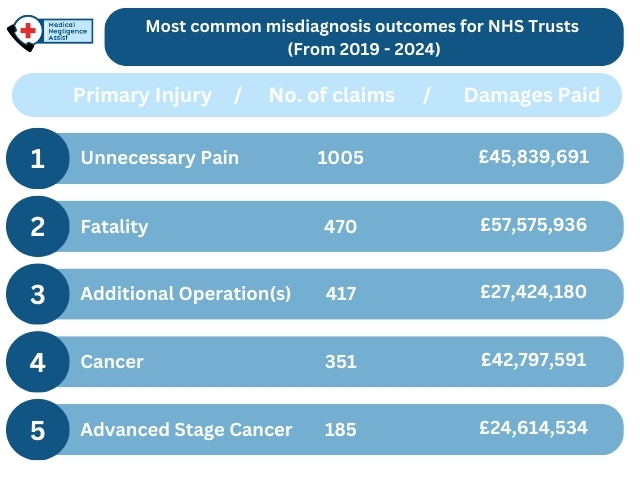NHS trusts across the country misdiagnosing patients and leaving them in needless pain have paid out millions in compensation over the past few years.
Figures obtained by Medical Negligence Assist found that, since 2019, NHS Trusts across the country have had to pay out nearly £1bn to patients who have lodged claims following a misdiagnosis.
NHS misdiagnoses: letting thousands of patients down
With an overstretched NHS, increasing patient numbers, and mounting pressures on staff, misdiagnoses are becoming alarmingly common.
When healthcare professionals fail to diagnose an illness or injury correctly, patients can endure painful and potentially fatal consequences. This is due to clinicians not providing the right medical care and treatment.
A person affected by misdiagnosis can, in some cases, make a medical negligence claim against the NHS. Compensation is covered by insurance policies, meaning frontline care is unaffected by negligence claims.
Between 2019 and 2024, 8,067 claims regarding misdiagnoses were lodged against NHS Trusts, with 5,677 of these claims being settled.

The highest number of claims came in 2019/20. This was when 1,824 patients made claims against the trusts. A year later, this number decreased to 1,660 claims. The trusts have seen a rise in the number of claims over the past year, compared to 2022/23, with a total of 1,539.
A fifth of clinical negligence NHS compensation claims down to misdiagnosis
According to NHS Resolution, diagnostic errors contribute approximately 20% of all clinical negligence claims. The reasons for misdiagnosis naturally vary from case to case, but NHS Resolution highlights two consistent failings across England, one of which is diagnostic errors, particularly early incorrect diagnoses of soft-tissue injuries.
The second is issues with requests for imaging, reporting, interpretation, and follow-up. This includes failure to complete further imaging, such as CT or MRI, as indicated in national guidance. In 2023, the British Medical Journal (BMJ) conducted a study that found approximately 1 in 18 patients in primary and secondary care are affected by misdiagnosis.
The BMJ also found that misdiagnosed cancers, strokes, and heart attacks were among the most serious cases, often leading to life-altering consequences or death.
Medical Negligence Assist obtained figures on how much NHS Trusts have paid out for misdiagnosis claims since 2019. Over the past five years, the trusts have paid out a total of £970,716,751, with the highest amount being paid in 2022/23, at £240,921,060.

Gareth Lloyd is a medical negligence solicitor for JF Law – which owns the Medical Negligence Assist brand. He said:
Misdiagnosis is an all-embracing clinical negligence case type and covers a wide range of clinical situations from the simple diagnosis of a fracture to potentially fatal cancer diagnoses.
These cases can be a matter of life and death, and whether someone lives or dies will be determined by the success of the diagnosis.
Physician associates part of the problem
Based on figures gathered from NHS Resolution, the trusts with the highest compensation costs since 2019 have been revealed.
Mid and South Essex NHS Foundation Trust had the highest compensation costs at over £32m, while University Hospitals Sussex and Northern Care Alliance NHS Trusts also had costs of over £28m.

According to the Guardian, Surrey assistant coroner Karen Henderson wrote to 12 health leaders, including UK health secretary Wes Streeting, to express concerns over the limited training that physician associates (PA) have. This was after a woman was diagnosed as having a nosebleed despite having severe abdominal problems, which the PA had a “lack of understanding” about, and she was sent home the same day.
Pamela Marking, 77, returned to the hospital two days later after seeing her health deteriorate before undergoing surgery for complications arising from a femoral hernia, but died on 20 February 2024. Henderson said the PA had acted independently in the diagnosis, treatment, management and discharge of Marking without independent oversight by a medical practitioner.
Leaving patients in pain
NHS Resolution also revealed the most common injuries and outcomes that resulted from misdiagnosis claims against NHS Trusts. The most common outcome for misdiagnosis claims was unnecessary pain, which was lodged 1,005 times, with the trusts paying £45,839,691 in compensation, followed by fatalities, which saw 470 claims submitted.

NHS compensation claims: a last resort?
Speaking to Medical Negligence Assist, Gareth Lloyd said:
Misdiagnosis can have a huge impact on people’s lives. A common case of misdiagnosis is a scaphoid fracture, where typically someone uses their hands to break a fall.
I’ve had a specific case in the past whereby a man in his early twenties suffered a fractured scaphoid that was initially diagnosed as a sprained wrist. As it went undiagnosed for a number of months, the client ended up having a fixation of his wrist, resulting in him not being able to use the hand and, as a consequence, has not been able to continue with his job.
Medical Negligence Assist offers support to patients who may have suffered harm as a result of a misdiagnosis and can see if they have grounds to submit a claim. They operate a 24-hour helpline and claim online form, which you can access on their website.
Featured image via the Canary

















